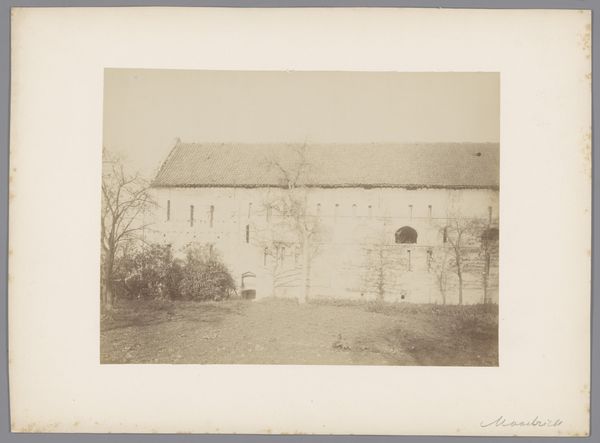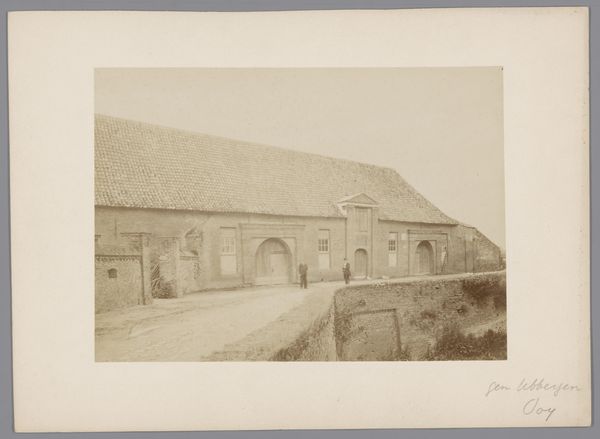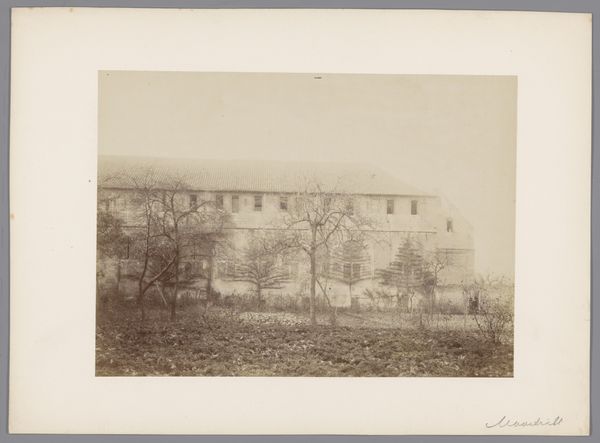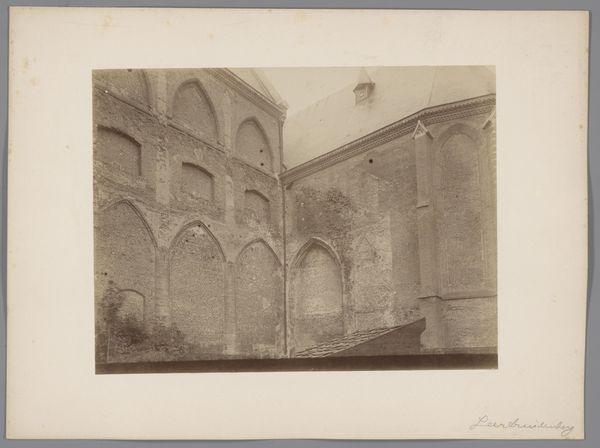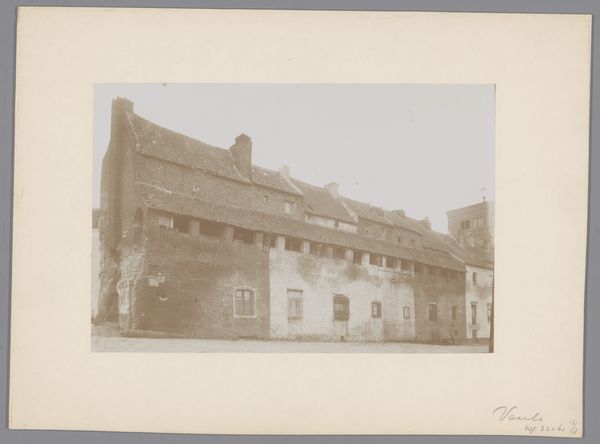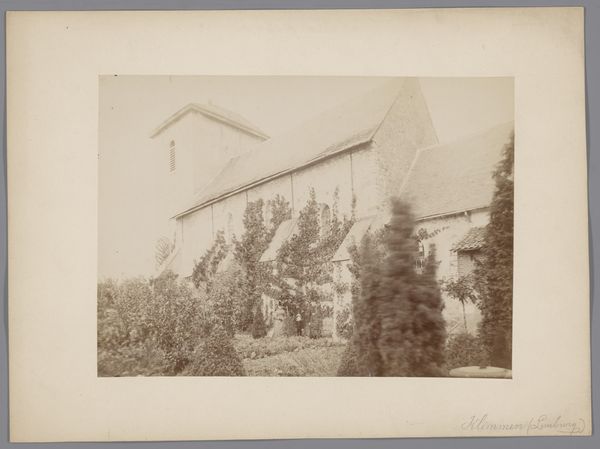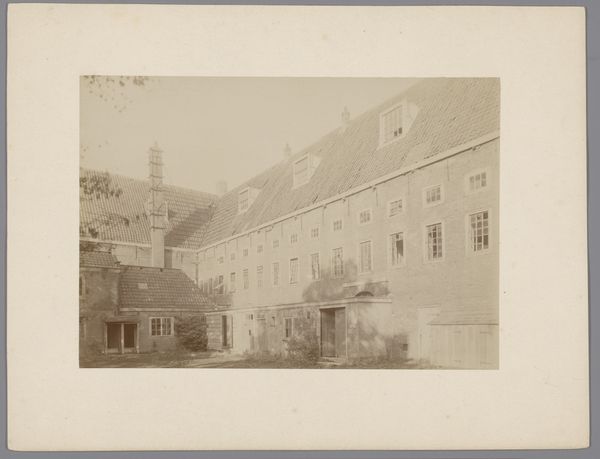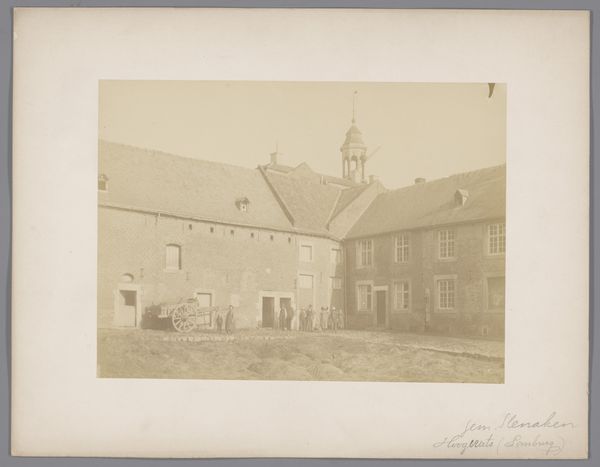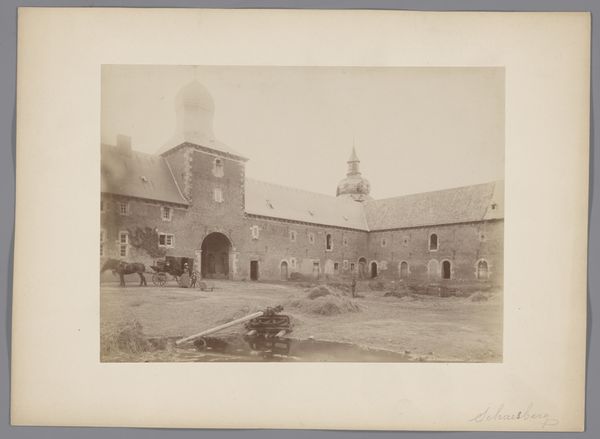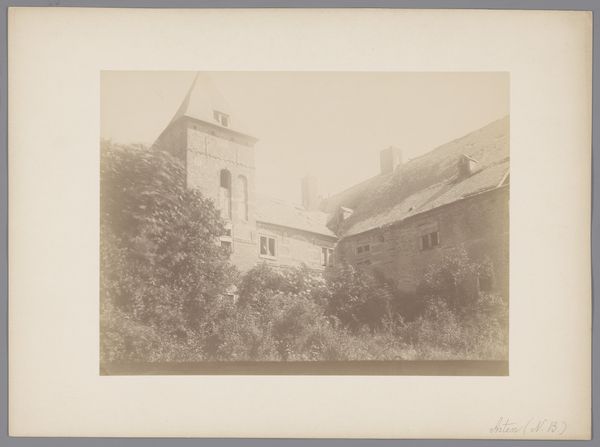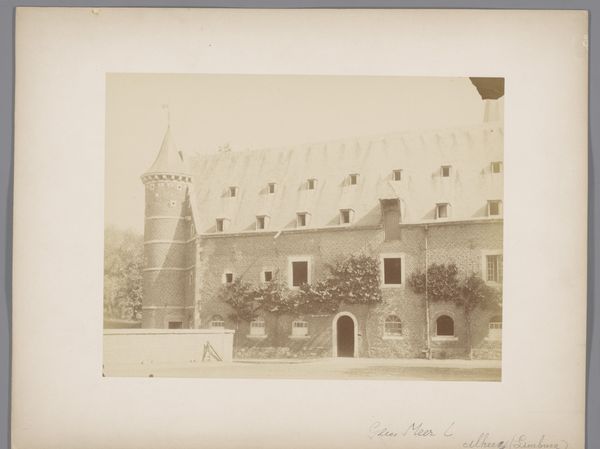
Dimensions: height 168 mm, width 232 mm
Copyright: Rijks Museum: Open Domain
Editor: So, this is "Binnenplaats van het oude Beyart klooster te Maastricht," a photograph taken in 1893. It's, well, quiet. A little bleak, maybe? It makes me think of a lost, hushed world. The composition with the building on both sides sort of traps you inside the space. What do you see in it? Curator: Trapped, you say? I feel cradled. There’s a certain softness to it, despite the stone. Notice how the photographer hasn't tried to make it picture perfect. The wild grass and slender trees suggest resilience, nature reclaiming the man-made. I wonder if the photographer was hinting at something? Perhaps the old order giving way to something new? What does this subdued color palette evoke for you? Editor: I guess I didn't think of it that way, as reclaiming. The palette does add to that muted feeling...almost like a memory fading. I was too focused on the building’s stillness, the architecture almost felt imposing. Is there something about the light that contributes? Curator: Absolutely. It's diffuse, not dramatic. The light doesn't hit the stone powerfully, which is why perhaps you didn’t see the gentle strength present. It's more like… the quiet perseverance of something old witnessing change. Consider also that the old Beyart monastery had probably been changed, and reused, many times, like an old stage on which countless life dramas have played out. Does that shift your initial perception? Editor: It does actually, now I notice the slight asymmetries in the building stone. It's much more complex and compelling than it seems at first glance. Thanks. Curator: My pleasure! I guess it just confirms that seeing isn't always believing, but feeling and experiencing adds another dimension of perception.
Comments
No comments
Be the first to comment and join the conversation on the ultimate creative platform.
